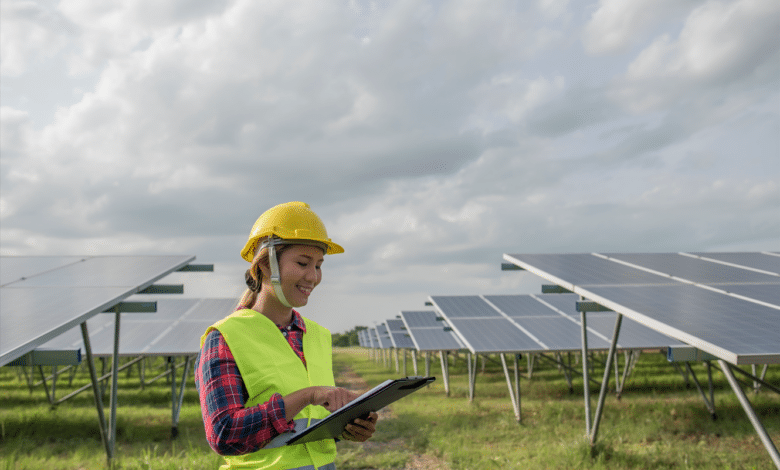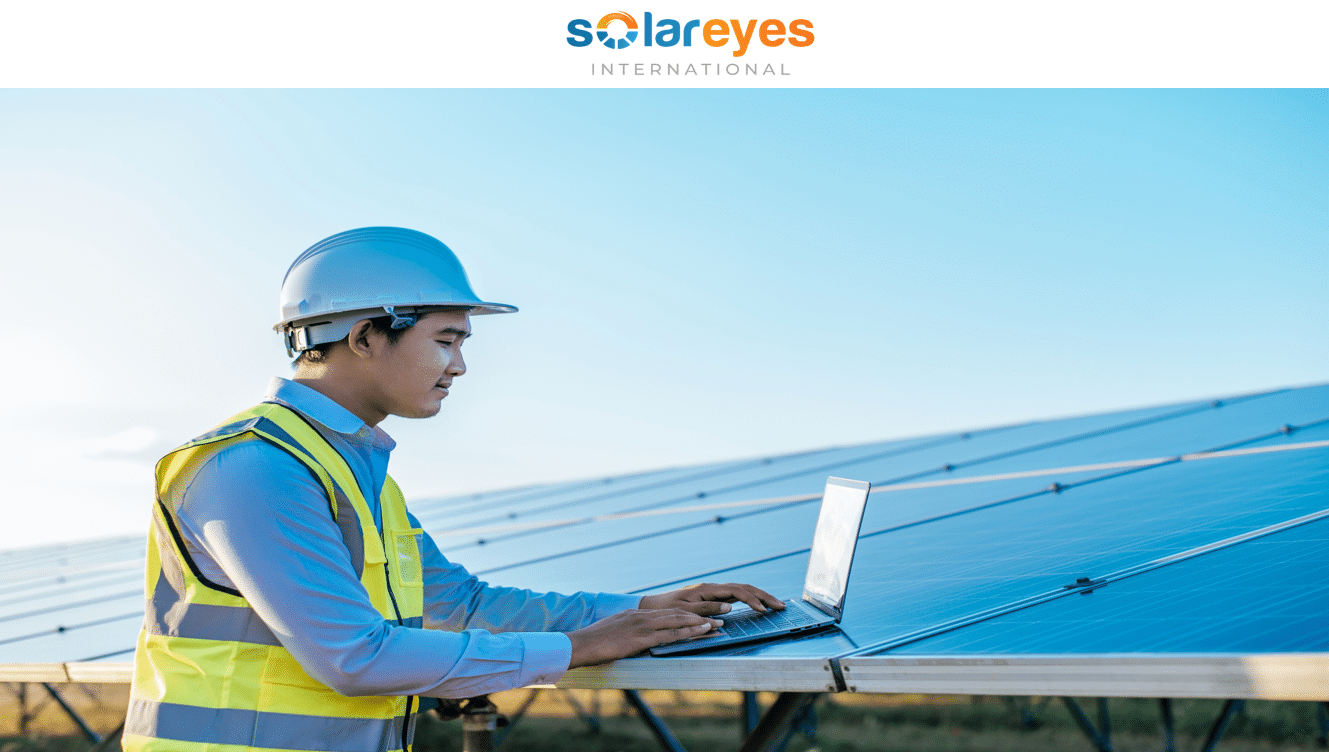Enroll Now for the Online Diploma in Solar Energy Engineering – FREE!!
Diploma in Solar Energy Engineering

Enroll Now for the Online Diploma in Solar Energy Engineering – FREE!!
In this free engineering course, you will learn about harnessing solar energy, photovoltaics and solar installations.
You will learn how to design photovoltaic (PV) systems for the conversion of solar energy into useful electrical energy for both stand-alone and grid-connected systems. You will also study solar radiation and its geometry to be able to extract the maximum energy out of solar radiation at a given location. The comprehensive course material also covers solar thermal devices.
In This Free Course, You Will Learn How To
- Discuss the different available means of harnessing solar energy
- Describe the devices commonly used for solar energy collection and storage
- Explain how solar radiation reaches the surface of the earth from the surface of the sun
- Identify the different instruments used for solar radiation measurement
- Indicate the relationships between the different angles of solar radiation geometry
- Calculate the monthly average of solar radiation at a given place
- Explain the use of sun-path diagrams
- Describe the construction of PV cells and their manufacturing process
- Distinguish between the components of a stand-alone and a grid-connected PV system
- Explain the design principles of PV systems
- Outline the performance criteria of PV systems
ALSO CHECK: HOW TO SIZE A SOLAR SYSTEM – 5 clear steps anyone can follow
Courses Modules
MODULE 1
Introduction to Solar Energy
This module explains what solar energy is, how it reaches the earth, and how it is harnessed for human use. You will learn about the geometry and physics of the sun and the earth
MODULE 2
Solar Radiation Geometry
In this module, you will learn how to measure and calculate solar radiation on any part of the earth, beginning with the various terms and definitions associated with Solar Geometr…
MODULE 3
Solar Radiation Estimation
This module is about the estimation of solar radiation on horizontal and inclined surfaces, under different climatic conditions. You will learn some empirical equations for predict…
MODULE 4
Diploma in Solar Energy Engineering – First Course assessment
This assessment enables you to review your learning so you can determine your knowledge and understanding of the first three modules from the following course: • Diploma in Solar …
MODULE 5
Fundamentals of Photovoltaic Systems
In this module, you will learn the basics of solar photovoltaic systems, starting from their construction to the principle of working, and the challenges of their proper functionin…
MODULE 6
Standalone Photovoltaic Systems
In this module, you will learn all about standalone (off-grid) photovoltaic systems. This includes the standard components and their specifications, design considerations, and util…
MODULE 7
Grid-Connected PV System
This module covers the design and construction of grid-connected photovoltaic systems. You will learn about the components of the system and their specifications, design parameters…
MODULE 8
Diploma in Solar Energy Engineering – Second Course assessment
This assessment enables you to review your learning so you can determine your knowledge and understanding of modules 4, 5, and 6 from the following course: • Diploma in Solar Ener…
MODULE 9
Course assessment
ALSO CHECK: HOW TO START A SOLAR COMPANY – do these 6 things and make money through solar
Course Description
This course introduces you to the field of solar energy engineering and reveals some of the basic techniques and measures adopted by solar scientists and engineers to gauge and capture solar radiation. Begin by exploring the need for, and importance of, renewable energy sources in today’s world and the global focus on solar energy. Learn about the nature of solar radiation, how it reaches the earth and the different ways it can be used. This section includes the employment of different instruments and devices for capturing and storing solar radiation, both in thermal and electrical forms. While you gain a basic understanding of how solar PV generators and solar power plants work, you will see how solar equipment designers predict and estimate the amount of solar energy available and the challenges they face. Learn about the empirical equations and correlations that relate the values of radiation (global or diffused), with meteorological parameters like sunshine hours, cloud cover and precipitation. Several numerical examples will give you ample practice in making calculations related to real-life problems and scenarios encountered by solar energy engineers.
As you progress, you will appreciate the need for estimating and predicting the availability of solar radiation, not only in the different parts of the world but also in extraterrestrial regions. Grapple with designing different photovoltaic systems for the conversion of solar energy into electricity, including the construction of PV cells and their manufacturing process, specifications of solar modules, arrays, their application, and the working principles of solar cells. To understand how solar cells work, you will dive into the fascinating field of semiconductor physics. Like all systems, PV conversion has its own challenges and you will be introduced to difficulties such as cell mismatch, the effect of shadows, maximization of solar PV output, and load matching. You will be shown certain solutions to these challenges, such as mechanical and electrical tracking and bypass diodes. Finally, you will learn the steps in the design process of stand-alone and grid-connected PV systems and their performance analysis.
Anyone with a basic knowledge of physics who understands the fundamentals of light, electricity and thermodynamics can take this course. The technology and engineering behind solar power and solar energy are enthralling. Building a career in energy engineering or a related field can be extremely rewarding as the need for energy engineers and technologists is gaining momentum. Furthermore, due to the current emphasis on sustainability, architects and town planners must also incorporate solar energy devices in all their designs and planning of green buildings and environments. This course will be also helpful to you should you wish to pursue a career in environmental studies, architecture or planning.
How To Apply/Register
Click the link below to see more information and how to register for this courses while slots are still there.
FOLLOW US ON SOCIAL MEDIA
Follow us on LINKEDIN, FACEBOOK, TELEGRAM GROUP and WHATSAPP.
*** ALSO CHECK: HOW TO SIZE A SOLAR SYSTEM – 5 clear steps anyone can follow
HOW TO START A SOLAR COMPANY – do these 6 things and make money through solar
How to Identify Fake Solar Products
SOLAR PANEL LOSSES: All you Need to Know + Tips on how to avoid them
SOLAR PV MODULE MANUFACTURING PROCESS EXPLAINED – from solar cells to solar panel
10 Surprising Ways Solar Energy Can Save You Money Today!
Opportunities for Solar Energy Development in Europe
FREE TOOLS to use for Solar Panel Tilt Angle Calculation and Installation – for any location
How Solar Panels Can Increase Your Home Value
HOW TO IDENTIFY FAKE SOLAR PRODUCTS – 6 things to check
Some Examples of where People have Fallen Victim to Fake Solar Products
How to Choose Solar Panel Brands






